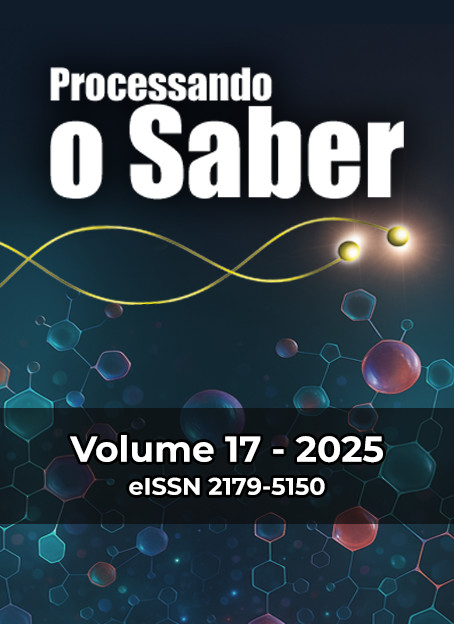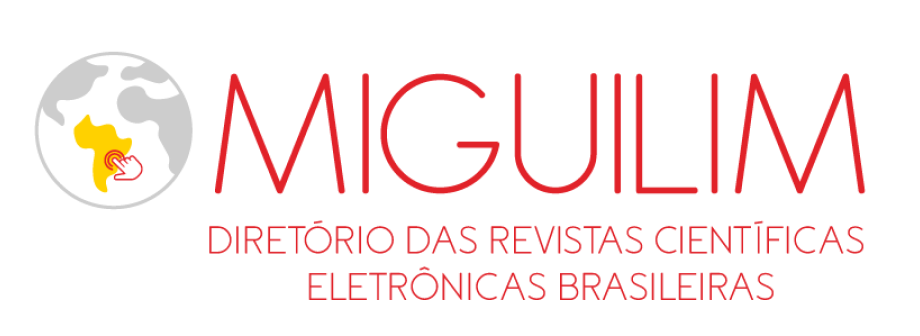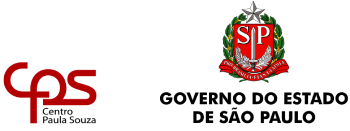Socio-environmental assessment of the Santos and São Vicente municipalities on the coast of São Paulo/Brazil: application of social network analysis to the DPSIR conceptual framework
application of social network analysis to the DPSIR conceptual framework
DOI:
https://doi.org/10.5281/zenodo.15499049Keywords:
DPSIR, Baixada Santista, Port of Santos, Social Network AnalysisAbstract
Considering the social, economic, and ecological complexity of coastal regions and the difficulty of public and private environmental management in these highly populated areas with multiple sources of pollution, this study used the driver, pressure, state, impact, and response model to socio-environmentally assess the coastal municipalities of Santos and São Vicente in the Baixada Santista metropolitan region, SP-Brazil. Data were evaluated by social network analysis. Results indicated the most relevant drivers (i.e., those that most affected sustainability and environmental governance) within the municipalities of Santos and São Vicente, such as port activities (represented by the pressure due to the emission of contaminants in the air and water and dredging). Poor air quality due to pollution and its impacts on human health stand out as an element in the state factor. The most forceful responses refer to the increase in the inspection and control of atmospheric emissions, liquid effluents, dredging, and solid waste. Our approach will support decision-makers to focus on the most critical aspects in this study to implement corrective and preventive actions and develop environmental and sectoral public policies.
Downloads
References
Abreu, F.E.L et al. (2020) Are antifouling residues a matter of concern in the largest South American port? J. Hazard Mater. https://doi.org/10.1016/j.jhazmat.2020.122937
Almeida, A. A. et al. (2018). Determinação quantitativa de coliformes fecais na areia das praias de Santos (São Paulo, Brasil). Anais do Encontro Nacional de Pós Graduação, 2(1), 204-209.
Bandeira, N. F. B. et al. (2022). A política nacional e a política municipal de resíduos sólidos aplicadas à circunscrição municipal de São Vicente, Estado de São Paulo.
Begliomini, F. N. et al. (2017). Shell alterations in limpets as putative biomarkers for multi-impacted coastal áreas. Environ. Pollut. https://doi.org/10.1016/j.envpol.2017.04.045
Braga, A. L. F. et al. (2009). Estudo epidemiológico na população residente na Baixada Santista – Estuário de Santos: avaliação de indicadores de efeito e de exposição a contaminantes ambientais. Santos: Unisantos.
Carmo, C. A., Abessa, D. M. S., & Machado Neto, J. G. (2011) Metais em águas, sedimentos e peixes coletados no estuário de São Vicente-SP, Brasil. O Mundo da Saúde, 35(1), 64-70.
Carriço, J. M. (2015). O Plano de Saneamento de Saturnino de Brito para Santos: construção e crise da cidade moderna. Risco Revista de Pesquisa em Arquitetura e Urbanismo, 22, 30-46.
Companhia Ambiental do Estado de São Paulo (CETESB) (2021a). Resíduos Industriais. São Paulo: CETESB. https://cetesb.sp.gov.br/residuossolidos/publicacoes-e-relatorios/
Companhia Ambiental do Estado de São Paulo (CETESB) (2021b). Qualidade do ar no estado de São Paulo. São Paulo: CETESB. https://cetesb.sp.gov.br/ar/
Charrad, M. (2016). Cluster Analysis of Social Networks Using R. In Dehmer, Y. S., & Emmert-Streib, F. Computational Network Analysis with R. https://doi.org/10.1002/9783527694365.ch9
Conselho Nacional de Pesca e Aquicultura (CONEPE) (2014). Tabela de defesos das espécies marinhas e estuarinas. http://www.conepe.org.br/index.php/periodo-de-defeso
Cunha, C. M. L., & Oliveira, R. C. (2015). Baixada Santista: uma contribuição à análise geoambiental. São Paulo: Editora UNESP Digital.
EEA, 1999. Environmental Indicators: Typology and Overview, Technical report No.25. European. Environment Agency, Copenhagen.
Federigi, I. et al. (2022). Beach pollution from marine litter: Analysis with the DPSIR framework (driver, pressure, state, impact, response) in Tuscany, Italy. Ecological Indicators, 143, p. 109-395.
Gouveia, N., Oliveira, A. J., Harayashiki, C. A. Y., Souza J. C., Lago, E., Cano, N. F., Maltez, H. F., Lourenço, R. A., Huahuasoncco, K. V. T. & Castro, I. B. (2022). Contaminação química em áreas costeiras altera forma, resistência e composição de conchas de gastrópodes carnívoros. QUIMIOSFERA.
Henriques, M. et al. (2018) Aspects of the population structure of the brown mussel, Perna perna, related to the extraction from natural beds, of Santos Bay, State of São Paulo, Brazil. Boletim do Instituto de Pesca, 30(2), 117-126. https://www.pesca.sp.gov.br/boletim/index.php/bip/article/view/Henriques30_2.
JACOB D. (2022). Holster Introduction to R for Data Science: A LISA 2020 Guidebook. Chapter 7- Network Analysis. https://bookdown.org/jdholster1/idsr/network-analysis.html
INSTITUO BRASILEIRO DE GEOGRAFIA E ESTATÍSTICA (IBGE) (2020). Produto interno bruto dos municípios. Coordenação de Contas Nacionais. https://www.ibge.gov.br/explica/pib.php
KIM, K. H.; KABIR, E.; JAHAN, S. A. (2016) Exposure to pesticides and the associated human health effects. Science of the environment, 2017 LESCRECK, M. C. et al. Análise da qualidade sanitária da areia das praias de Santos, litoral do estado de São Paulo. Engenharia Sanitaria e Ambiental, vol. 21, n. 4, p. 777-782. https://doi.org/10.1016/j.scitotenv.2016.09.009
MALMIR, M. et al. (2021). A new combined framework for sustainable development using the DPSIR approach and numerical modeling. Geoscience Frontiers, v.12, n. 4, p. 101169.
MARINHA DO BRASIL. NORMAM-11/DPC (2022). Portaria DPC/DGN/MB nº 63, de 22 de setembro de 2022. Disponível em: https://www.marinha.mil.br/dpc/sites/www.marinha.mil.br.dpc/files/NORMAM%2011%20-%20Rev2%20-%20Mod2.pdf#:~:text=A%20presente%20norma%20possui%20o%20prop%C3%B3sito%20de%20estabelecer,do%20espa%C3%A7o%20aquavi%C3%A1rio%20e%20%C3%A0%20seguran%C3%A7a%20da%20navega%C3%A7%C3%A3o
MARGUTI, BÁRBARA OLIVEIRA; COSTA, MARCO AURÉLIO; FAVARÃO, CESAR BRUNO (2018). Brasil metropolitano em foco: desafios à implementação do Estatuto da Metrópole.
MARTINS, M. H. M. B.; MENEGON JR, N.; LAMPARELLI, C. C. (2020) Qualidade das águas costeiras nos Estado de São Paulo - 2019. São Paulo. CETESB.
MESTER, A., POP, A., MURSA, B. -. -., GREBLĂ, H., DIOŞAN, L., & CHIRA, C. (2021). Network analysis based on important node selection and community detection. Mathematics, 9(18) doi:10.3390/math9182294.
OBUBU, J. P. et al. (2022). Application of DPSIR model to identify the drivers and impacts of land use and land cover changes and climate change on land, water, and livelihoods in the L. Kyoga basin: implications for sustainable management. Environmental Systems Research, v. 11, n. 1, p. 1-21.
ONG ÁGUA DE LASTRO BRASIL (2009). Água de Lastro e seus Riscos Ambientais: Associação Água de Lastro Brasil-ALB.
PAIVA-FILHO, A. M.; SCHMIEGELOW, J. M. M. (1986). Estudo sobre a ictiofauna Acompanhante da pesca do camarão sete-barbas (Xyphopenaeus kroyeri) nas proximidades da Baía de Santos – SP. I – aspectos quantitativos. Boletim do Instituto Oceanográfico, vol. 34, 1986. DOI: 10.1590/S0373-55241986000100007
PEREIRA, C. D. S. et al. (2015). Metrópole e meio ambiente: aplicação do modelo DPSIR na RMBS. Baixada Santista: transformações na ordem urbana, p. 355–376.
PREFEITURA MUNICIPAL DE SANTOS (2016). Plano Municipal de Mudança do Clima de Santos. https://www.santos.sp.gov.br/?q=projeto/plano-municipal-de-mudanca-do-clima-de-santos#:~:text=O%20Plano%20Municipal%20de%20Mudan%C3%A7as,coloca%20diante%20de%20um%20desafio
PUSCEDDU, F. H., SUGAUARA, L. E., MARCHI, M. R., CHOUERI, R. B., CASTRO, Í. B. (2019). Estrogen levels in surface sediments from a multi-impacted Brazilian estuarine system, Marine Pollution Bulletin, Volume 142, Pages 576-580, ISSN 0025-326X. https://doi.org/10.1016/j.marpolbul.2019.03.052
RAMOS, TÂNIA MARIA; DINIZ, GODOI (2022). Desenvolvimentos e desigualdades. URBANA E DIREITO À CIDADE.
RIBEIRO, V. V.; HARAYASHIKI, C. A. Y.; ERTAS, A.; CASTRO, I. B. (2021). Anthropogenic litter composition and distribution along a chemical contamination gradient at Santos Estuarine System—Brazil. Regional studies in marine science. https://doi.org/10.1016/j.rsma.2021.101902
RIBEIRO-BRASIL, D. R. G., TORRES, N. R., PICANÇO, A. B., SOUSA, D. S., RIBEIRO, V. S. R., BRASIL, L. S., MONTAG, L. F. A. (2020). Contamination of stream fish by plastic waste in the Brazilian Amazon. Environmental Pollution. Volume 266, Part 1. ISSN 0269-7491. https://doi.org/10.1016/j.envpol.2020.115241
RODRIGUES, E. A.; VICTOR, R. A. B. M.; PIRES, B. C. C. (2006) A reserva da biosfera do cinturão verde da cidade de São Paulo como marco para a gestão integrada da cidade, seus serviços ambientais e o bem-estar humano. São Paulo em Perspectiva, vol. 20, n. 2, p. 71-89. http://produtos.seade.gov.br/produtos/spp/v20n02/v20n02_06.pdf.
SEILER, Lilian et al. (2020). Modelagem hidrodinâmica tridimensional do sistema estuarino Santos-São Vicente-Bertioga, Brasil. Estudos Regionais em Ciências Marinhas, v. 37, p. 101348.
SEKOVSKI, I. NEWTON, A., DENNISON, W. C. (2012). Erratum to “Megacities in the coastal zone: Using a driver-pressure-state-impact-response framework to address complex environmental problems”. Estuarine, Coastal and Shelf Science, Volumes 104–105, Page 123, ISSN 0272-7714, https://doi.org/10.1016/j.ecss.2012.05.001
SILVA, L. C. F.; QUIÑONES, E. M. (2012). Influência dos aspectos demográficos e climáticos na qualidade das águas das praias de Santos, SP, Brasil. Revista Ceciliana, vol. 4, n. 1, p. 60-67. https://sites.unisanta.br/revistaceciliana/edicao_07/1-2012-60-67.pdf.
SOYKAN, C. U. et al. (2008). Why study bycatch? An introduction to the Theme Section on fisheries bycatch. Endangered Species Research, vol. 5, p. 91-102. DOI: 10.3354/esr00175
SUSENO, B. R. et al. (2023). THE problem of waste in rivers and seas and their effects on water quality using the dpsir method. Jurnal Ekonomi, v. 12, n. 01, p. 647-659.
TABASSUM, S, PEREIRA, FSF, FERNANDES, S, GAMA, J. (2018) Social network analysis: An overview. WIREs Data Mining Knowl Discov. 8:e1256. https://doi.org/10.1002/widm.1256
TESFALDET, Y. T., NDEH, N. T. (2022) Assessing face masks in the environment by means of the DPSIR framework, Science of The Total Environment, Volume 814, 152859, ISSN 0048-9697. https://doi.org/10.1016/j.scitotenv.2021.152859.
VIEIRA, A. F.; ARAUJO J. L. L. (2015) Turismo e sustentabilidade ambiental na comunidade de Barra Grande, Cajueiro da Praia-Piauí. Revista Brasileira de Pesquisa em Turismo, vol. 9, n. 3, p. 519-536. DOI: 10.7784/rbtur.v9i3.994
Published
How to Cite
Issue
Section
Copyright (c) 2025 Revista Processando o Saber

This work is licensed under a Creative Commons Attribution 4.0 International License.
Os direitos autorais dos artigos publicados pertencem à Revista Processando o Saber e seguem o padrão Creative Commons (CC BY), que permite o remixe, adaptação e criação de obras derivadas do original, mesmo para fins comerciais. As novas obras devem conter menção ao(s) autor(es) nos créditos.
























